Tell us if you relate: You live for a good bread basket. When others ask, “What is focaccia bread?” you respond by admitting that you make your own at home.
In the past, you may have even chosen a restaurant solely for its bread (we’re looking at you, Che Fico and Republique). If you encounter a spot-on bread basket and the place happens to be Italian, you consider it your duty as a food lover to taste the focaccia bread.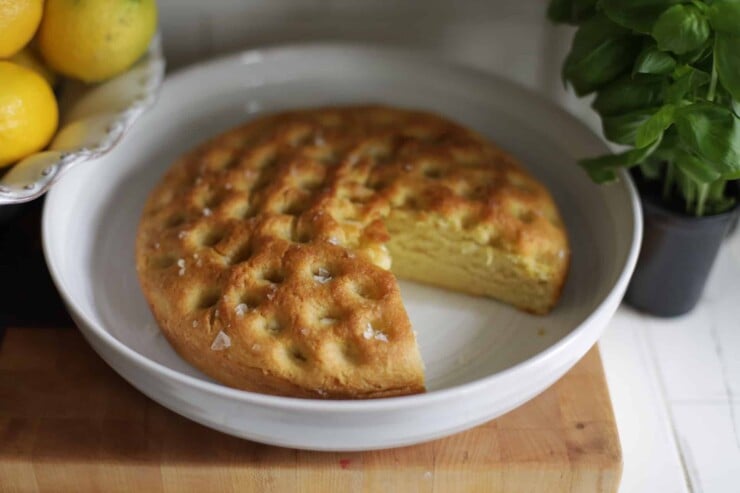
As a food-focused travel company that specializes in crafting Italy travel itineraries, we spend a lot of time advising clients on how to eat on their trips. But they also return and ask our advice on how to recreate iconic recipes, like focaccia bread, at home.
Here, we’re sharing information about the origin of focaccia bread and our top 10 tips for baking it yourself.
Why You Should Trust Us

The Most Popular Italian Bread
It’s fair to say that focaccia (pronounced “foe-kah-cha”) is among the most popular Italian breads. When you travel to Italy, you’ll see focaccia eaten all day long — be it dunked in cappuccino as they do in Genoa, taken to the beach as an afternoon snack, or stuffed with prosciutto, mozzarella, arugula, or tomatoes to make sandwiches.
While most food lovers are familiar with the thinner Tuscan-style focaccia made with rosemary (known as schiacciata or “smashed” bread) or the airier Focaccia Genovese, there are numerous styles of focaccia from the various regions of Italy.
To help you keep it all straight, we’re giving you pretty much everything you need to know about focaccia bread, including its origin, the most common styles, and tips to help you bake the perfect batch.

What Is Focaccia Bread And Where Does It Come From?
If you were to take a time machine to the United States in the mid-1990s, you’d see focaccia on seemingly every restaurant table. We’re not sure why or how, but focaccia entered the collective American culinary consciousness around that time.
The truth is focaccia has a history dating back almost 2,000 years. Some accounts credit the Etruscans, while others praise the Greeks for its creation. These days, Liguria, Italy (the region home to Genoa) is considered the epicenter for traditional Italian focaccia and pesto. By the way, if you’re wondering, you can read all about “What Is Pesto Sauce?”

What Makes Focaccia Bread Different?
Regarding distinguishing focaccia from pizza, we like how Eileen Weinberg described it to the New York Times, “focaccia connotes bread with a little topping, and pizza connotes topping with a little bread.”
Generally, a classic Italian-style pizza crust is less than half an inch thick, while most focaccia is at least three-quarters of an inch thick. Focaccia is most commonly served at room temperature, although you can also eat it cold or toasted.
Another difference between the two is the ingredients. If you’re curious as to what focaccia bread is made of, well, the answer is it’s usually a combination of strong flour (meaning a high-gluten flour like bread flour), extra virgin olive oil, yeast, herbs, spices, salt, and pepper. Those ingredients are similar to pizza, but focaccia usually contains more leavening (yeast) than your typical pizza recipe.

Five Tips For Baking The Best Focaccia Bread
True, making focaccia is a great way to try baking, but that doesn’t mean your first attempt will be a guaranteed success. Some struggle to get the bread to rise, some end up with super dense bread, and others bake focaccia that tastes overly yeasted.
A few key details make all the difference between mediocre and great focaccia.
Use Quality Ingredients
First, ensure you use quality ingredients: organic flour, extra virgin olive oil, a great sea salt, and yeast (note: if you don’t have yeast, you can make the unleavened focaccia di Recco).
Have A Hydrated Dough
Next, you’ll want to create a moist dough with ideally a minimum of 70% hydration (standard in all the Salt & Wind Travel focaccia recipes).
Let It Rest A Long Time
You’ll also want to be uber patient and let it rest a long time so the flavor can develop—as in letting the dough rest anywhere from 8 hours to 48 hours after the initial kneading. This crucial step will allow for adequate fermentation, which in turn will guarantee superior (non-yeasty) flavor.
Don’t Skimp On The Olive Oil
Another crucial step is to be very generous with the olive oil. Almost every step involves some olive oil: it should be in the dough, used to grease the baking sheet, and brushed on the bread before it goes in the oven and when it comes out!
Make A Brine
For our classic Genoa-style focaccia, we swear by the traditional step of adding a salamoia or a brine to the dough before it is placed in the oven.
This brine—made by whisking together 1 part water to 2 parts olive oil and a large pinch of sea salt—gives the final focaccia an airy, golden crust and helps the salt really incorporate into the dough. Oh, and as soon as the focaccia comes out of the oven, do one final brush of olive oil to seal in the taste!
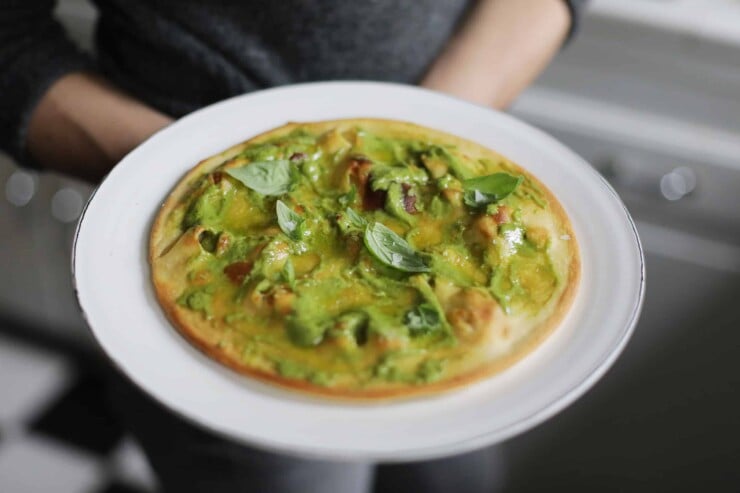
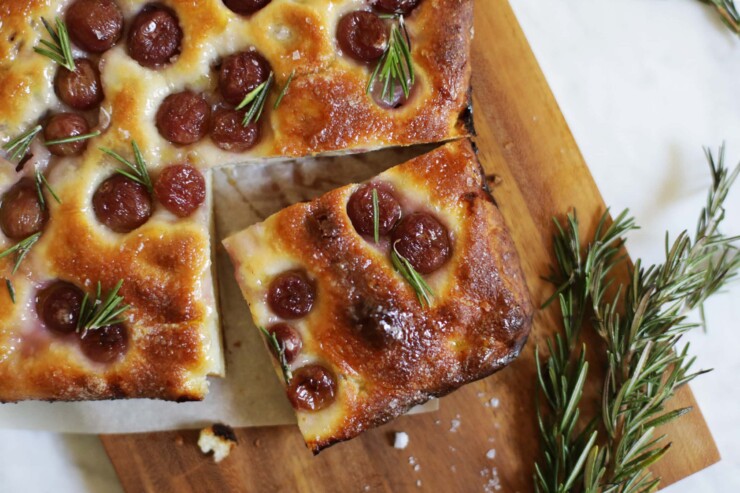
Six Classic Types Of Focaccia Bread
As you travel through Italy, you’ll find focaccia bread that varies greatly in thickness, toppings, and texture. Here are six classic types you may encounter:
Focaccia Genovese
Liguria is the birthplace of traditional focaccia bread, which is known as focaccia Ligure or Focaccia Genovese. This bread is simple yet classic, sprinkled with salt and brushed with olive oil, soft and about 1 inch thick.
Focaccia Di Recco
The Italian Riviera towns of Liguria are also the home of focaccia di Recco, which has cheese sandwiched between two thin layers of unleavened bread.
Sardenaira
If you head to the town of Sanremo (still in Liguria!) near the French border, you’ll come across focaccia topped with anchovies or sardines, known as sardenaira or pizzalandrea. It’s reminiscent of the French flatbread, pissaladière, and is one of the most classic Liguria foods.
Fugassa Veneta or “Venetian Focaccia”
The Venetians made a sweet version of focaccia topped with sugar and butter instead of salt and olive oil, a classic Italian Easter food.
Focaccia Barese
In the Southern Italian town of Bari, you’ll find focaccia Barese (a classic Puglia food), made with durum wheat flour (sometimes also potato flour) and topped with rosemary, tomatoes, olives, and salt.
Schiacciata
Lastly, there is the relatively well-known Tuscan focaccia known as schiacciata. This focaccia bread is fully covered in olive oil, usually thinner than the Genoa-style focaccia. It is often topped with rosemary and tends to have a soft interior yet be crispy on the outside. During the harvest months, it’s common to make schiacciata all’uva (pictured above) where the bread is sweetened and stuffed with wine grapes.
Frequently Asked Questions About Focaccia Bread
Focaccia is one of the most popular Italian breads with a history dating back almost 2,000 years. It is believed to have been created by the Etruscans or the Greeks. Today, Liguria, the region that's home to Genoa, is considered the epicenter for traditional Italian focaccia.
Focaccia is typically thicker than a classic Italian-style pizza crust and is most commonly served at room temperature. It contains more leavening (yeast) than your typical pizza recipe and is made of a combination of strong flour, extra virgin olive oil, yeast, herbs, spices, salt, and pepper.
Use quality ingredients, create a moist dough with ideally a minimum of 70% hydration, let the dough rest anywhere from 8 hours and up to 48 hours after the initial kneading, be very generous with the olive oil, and add a brine to the dough before it is placed in the oven.
There are numerous styles of focaccia from the various regions of Italy. Some of the most popular ones include Focaccia Genovese, Focaccia di Recco, Sardenaira, Focaccia Barese, and Schiacciata.
Focaccia that does not have meat or cheese can be stored at room temperature away from heat and light. Focaccia with meat or cheese should be wrapped in wax or parchment paper, placed in a resealable container, and stored in the refrigerator. To reheat focaccia, you can put it on a baking sheet or tray in a toaster oven or full-sized oven and warm it at 250°F until it is heated through.
Get A Personalized Travel Itinerary
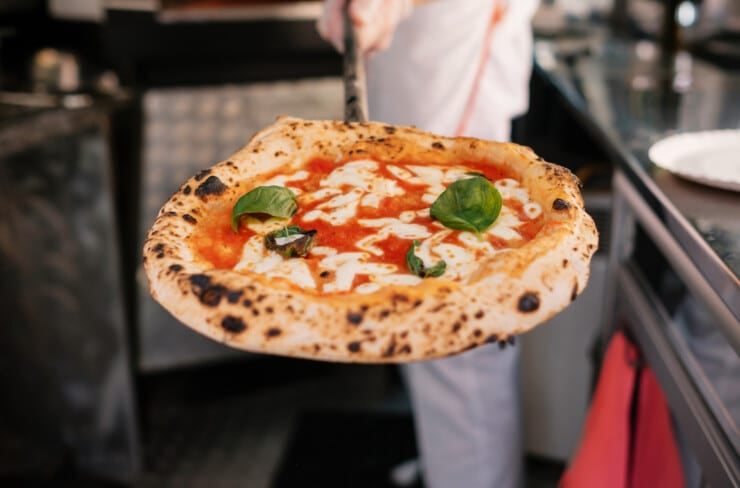
Type Of Pizza In Italy
Now that you’re versed in focaccia bread, you likely want to learn more about Italian classics like pizza. We’ve got you covered with our guide to pizza in Italy including the classic types you’ll encounter like Margheria, pizza fritta, and pizza tonda romana.
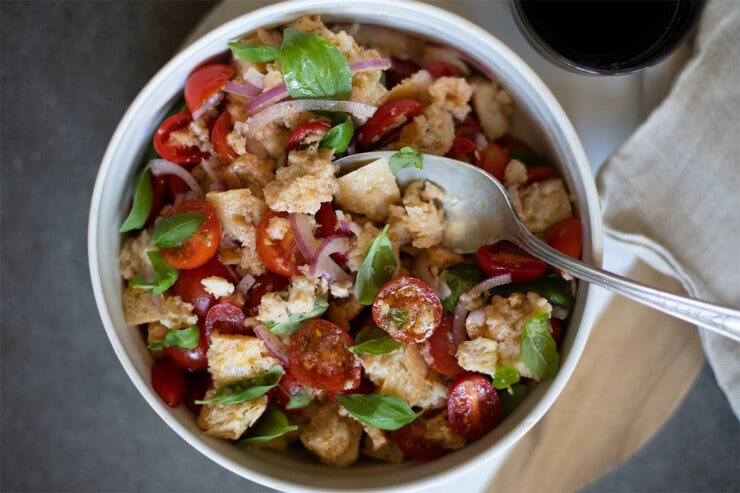
Classic Italian Recipes
Cook up these classic Italian recipes to get a taste of the country in the comfort of your home:
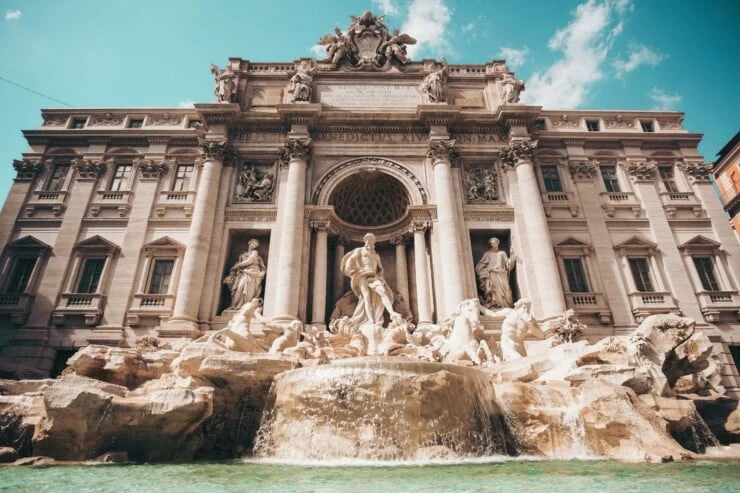
Italy Travel Guide
If you’re planning a trip to Italy soon, be sure to check out all the itinerary ideas, travel tips, and more in our Italy Travel Guide.
Have Us Plan Your Italy Trip
Did you know we’re also a boutique travel agency that specializes in Italy travel planning? If you’re looking to plan one of the best trips to Italy, our Italy trip planner services are here to help you plan your perfect itinerary.
Photo Credit: Christopher Kalima for Salt & Wind Travel